Welcome to the wonderful world of air plants, where gardening meets minimalism and creativity!
Air plants, scientifically known as Tillandsia, are unique and fascinating plants that require little to no soil to thrive. They are the perfect addition to your indoor garden, and their versatility allows you to get creative with your plant displays.
In this guide, we’ll explore the benefits of growing air plants and dive into some of my favorite varieties to help you get started on your journey to becoming an air plant aficionado.
Benefits of Growing Air Plants
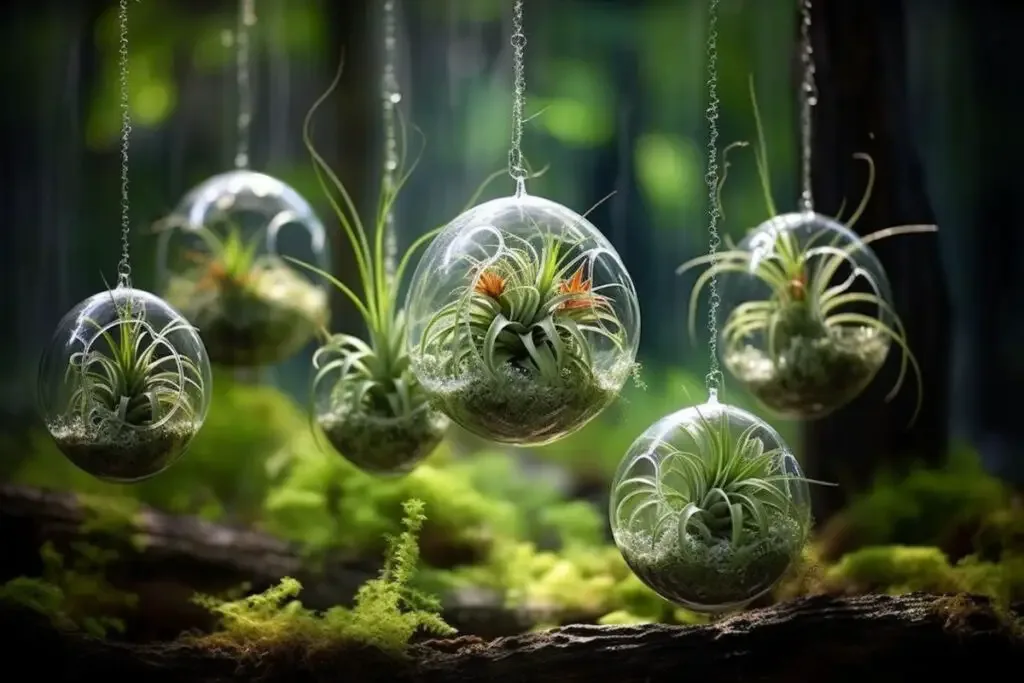
Air plants have gained popularity for several good reasons. Let’s delve into a few of the key benefits of incorporating these charming green companions into your living space.
1. Low Maintenance
One of the most enticing aspects of air plants is their low maintenance requirements. These hardy little plants are incredibly adaptable and can thrive in a variety of environments.
Unlike traditional potted plants, air plants don’t need soil, making them mess-free and easy to care for. Simply mist them with water a few times a week and provide them with indirect sunlight, and they’ll flourish.
2. Unique Aesthetic
Air plants are visually captivating and add a touch of whimsy to any room. Their unique appearance, which often includes silvery-green leaves and intriguing forms, makes them great conversation starters.
You can display them in countless creative ways—on driftwood, in glass terrariums, or even hanging from the ceiling. With air plants, your imagination is the limit when it comes to styling and decorating.
3. Air Purification
Air plants don’t just sit there looking pretty; they also contribute to better air quality in your home. Like other houseplants, air plants absorb carbon dioxide and release oxygen.
Additionally, they can filter out certain toxins and improve indoor air quality. Having these natural air purifiers around can help you breathe easier and feel healthier.
My Favorite Air Plants Varieties
Now that you’re aware of the benefits of having air plants in your life, let’s explore some of my favorite varieties. Keep in mind that there are over 650 different species of Tillandsia, so you’re bound to find a few that capture your heart.
1. Tillandsia Ionantha
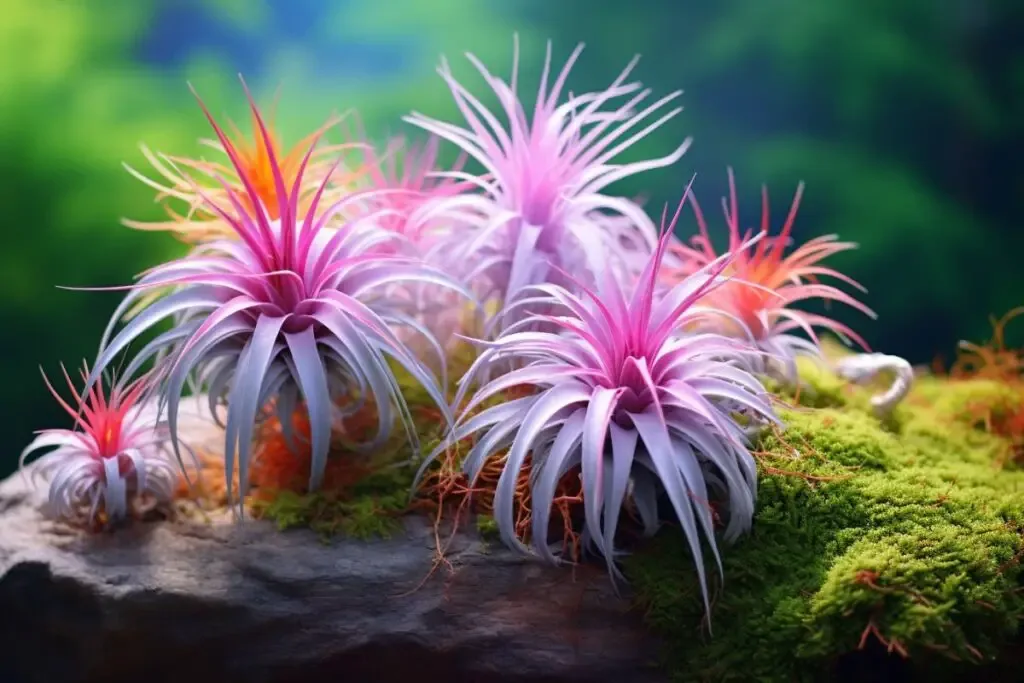
The Tillandsia Ionantha is a classic favorite among air plant enthusiasts. It’s a petite species with bright green or red-tipped leaves that turn a lovely shade of pink when it blooms. These little beauties are incredibly versatile and can thrive in a variety of environments, making them perfect for beginners.
2. Tillandsia Xerographica
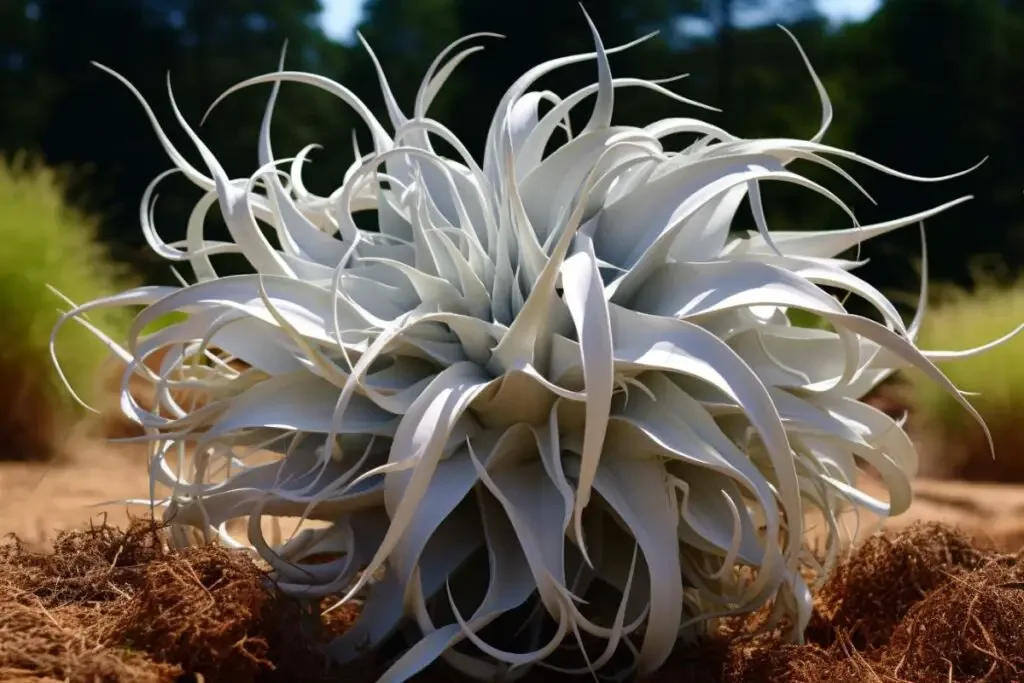
If you’re looking for a statement air plant, the Tillandsia Xerographica is the one to consider. With its dramatic, curly, and silvery-gray leaves, it’s a showstopper. This species is relatively larger and commands attention wherever it’s placed. It’s a bit more demanding in terms of care, but the visual impact is well worth the effort.
3. Tillandsia Bulbosa
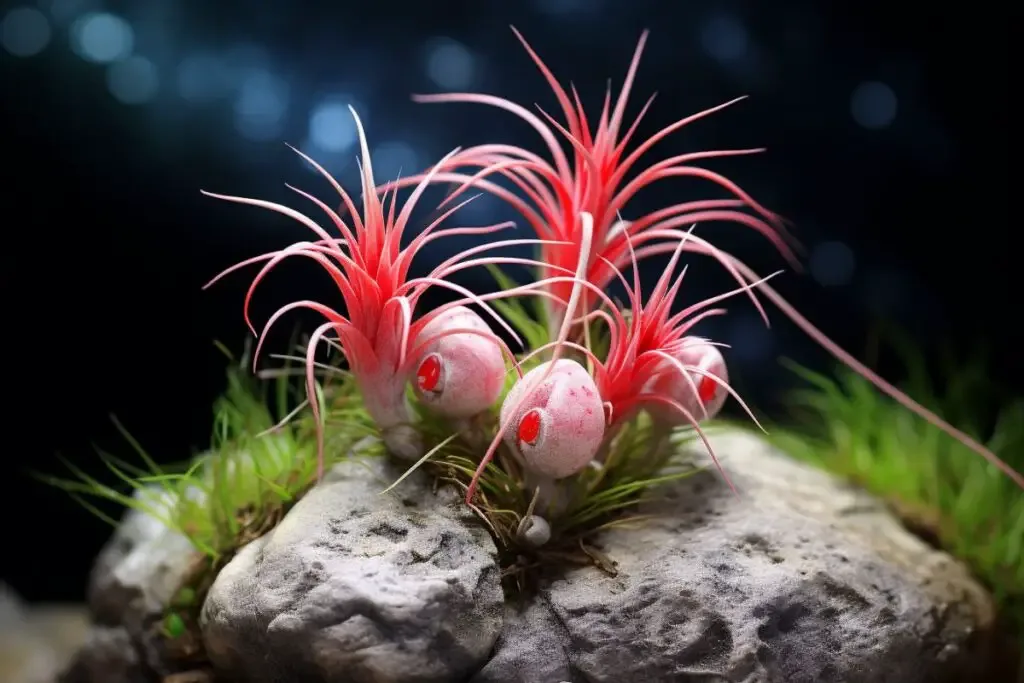
Tillandsia Bulbosa is known for its quirky and unique appearance. Its long, snake-like leaves curl and twist, giving it an otherworldly appearance. This air plant is an excellent choice if you want something that stands out and sparks conversations among your guests.
Air Plant Care
Now that you’ve been introduced to the wonderful world of air plants and learned about their benefits and some favorite varieties, it’s time to dive into the nitty-gritty of air plant care.
These unique plants have specific requirements that are crucial to their health and well-being. Let’s explore how to properly care for your air plants.
Planting
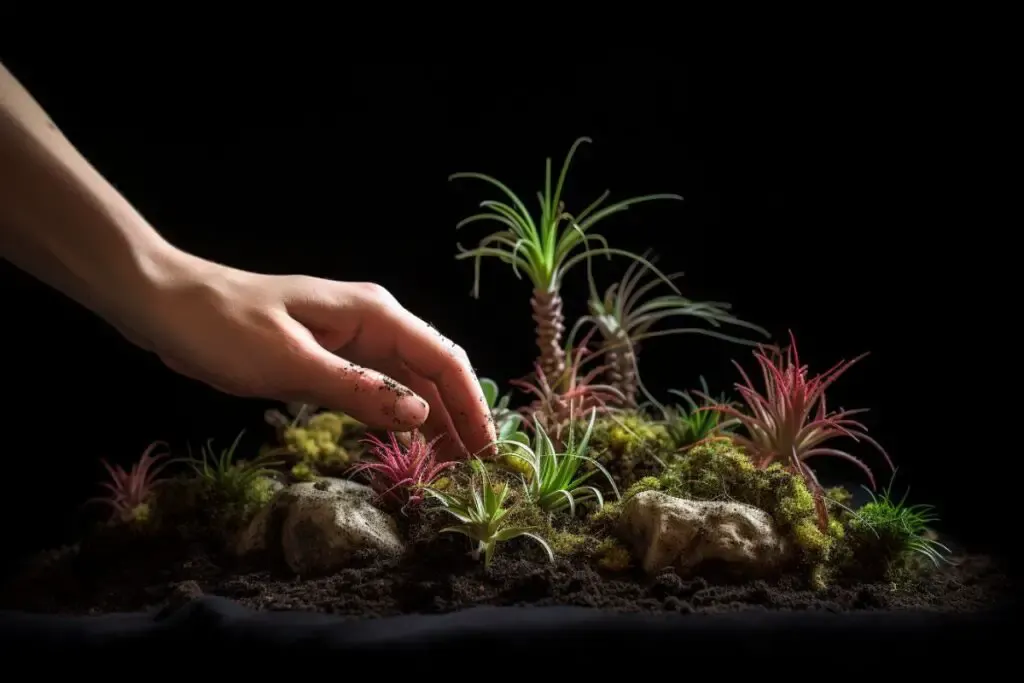
Unlike traditional plants, air plants don’t need soil to grow. They anchor themselves to surfaces using tiny root structures called trichomes. You can attach them to various objects like driftwood, stones, or even decorative holders. The key is to ensure they are secure but not tightly bound, as they need air circulation.
Light
Air plants thrive in bright, indirect light. They should be placed near a window with filtered sunlight or under fluorescent lights. Avoid exposing them to direct sunlight for extended periods, as this can cause their leaves to dry out and scorch.
Soil
As mentioned earlier, air plants don’t require soil. In fact, using soil will harm them. They obtain nutrients and moisture through their trichomes, which absorb water and nutrients from the air and rain. So, skip the potting soil and opt for a creative display instead.
Water
Watering air plants is essential for their survival, but it’s important to do it right. The preferred method is to mist them with water two to three times a week. Use a spray bottle to lightly mist the leaves, ensuring that they get thoroughly wet but not soaked.
Additionally, you can submerge your air plants in a bowl of water for 20-30 minutes once a week, then allow them to dry upside down to prevent water from pooling in the leaf base.
Temperature and Humidity
Air plants are native to tropical and subtropical regions, so they prefer temperatures between 50°F (10°C) and 90°F (32°C). They can tolerate brief temperature drops, but avoid prolonged exposure to cold or freezing conditions.
Maintaining a humidity level of around 50% is ideal for their health. In drier climates, consider using a humidity tray or a room humidifier.
Fertilizer
Air plants don’t require frequent fertilization, but providing them with nutrients can encourage growth and flowering. Use a water-soluble, low-nitrogen fertilizer formulated for air plants. Dilute it to 1/4 strength and apply it during one of your weekly soakings. Be careful not to over-fertilize, as this can harm the plants.
Pruning
Pruning air plants is a simple but important aspect of their care. While they don’t require extensive pruning like some other plants, removing dead or dried-up leaves is essential.
Use clean, sharp scissors or pruning shears to trim brown or withered leaves at the base of the plant. Pruning not only enhances the plant’s appearance but also allows for better air circulation, reducing the risk of fungal issues.
Propagating
Air plants can be propagated through offsets, or “pups,” which are smaller plants that grow at the base of the parent plant. To propagate your air plant, gently separate the pup from the parent plant when it reaches about one-third of the parent’s size.
Ensure the pup has some roots attached. You can then plant the pup on its own or leave it attached to the parent for a unique cluster effect.
How to Grow Air Plants From Seed
Growing air plants from seed is a more advanced and time-consuming process. It’s not the most common way to propagate them, but it can be a rewarding challenge for experienced gardeners.
You’ll need to obtain air plant seeds from a reliable source and create a controlled environment with consistent humidity and temperature. Plant the seeds on a suitable substrate and provide them with bright, indirect light. Keep in mind that it may take several years for air plants to grow to a size suitable for display.
Growing in Pots
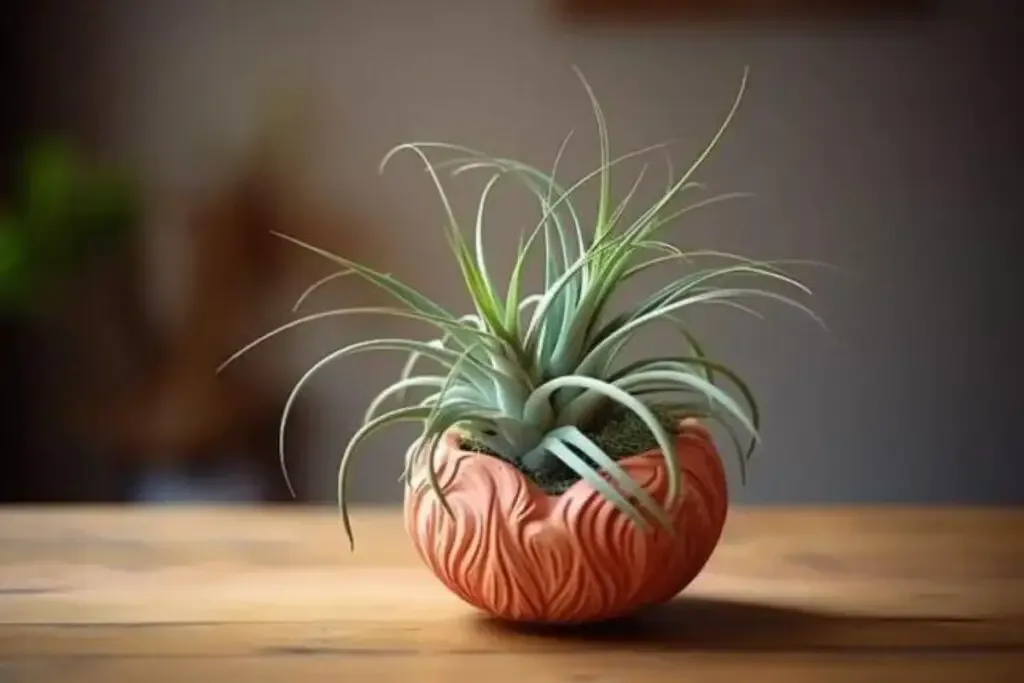
While air plants are typically grown without soil, some enthusiasts choose to grow them in pots filled with a well-draining air plant mix.
If you opt for this method, ensure the pot has drainage holes and use a mix of materials like bark, perlite, and sand. Plant your air plants in the pot, making sure not to bury them too deeply, and water sparingly to prevent root rot.
Overwintering
If you live in a colder climate, you may need to take extra precautions to protect your air plants during the winter months.
Air plants are sensitive to freezing temperatures, so bring them indoors when the temperature drops below their preferred range. Provide them with adequate light and continue their regular care routine throughout the winter.
Transplanting
Transplanting air plants is relatively straightforward. If your air plant outgrows its current display or you want to move it to a different location, gently remove it from its current anchor and attach it to a new one.
Take care not to damage the roots or trichomes during the process. Allow the plant some time to adjust to its new home, and continue with regular care.
Common Pests & Diseases
Air plants are relatively resilient, but they can still face a few common issues. The most common pests that may affect air plants are mealybugs and spider mites. To combat these pests, use a mixture of water and mild dish soap to gently wash the affected areas.
For diseases, such as fungal infections, ensure proper air circulation and avoid overwatering to prevent these issues from occurring in the first place.
By following these guidelines for pruning, propagating, growing from seed, potting, overwintering, transplanting, and addressing common pests and diseases, you’ll be well-equipped to care for your air plants and watch them thrive in your indoor garden.
Happy air plant gardening!

